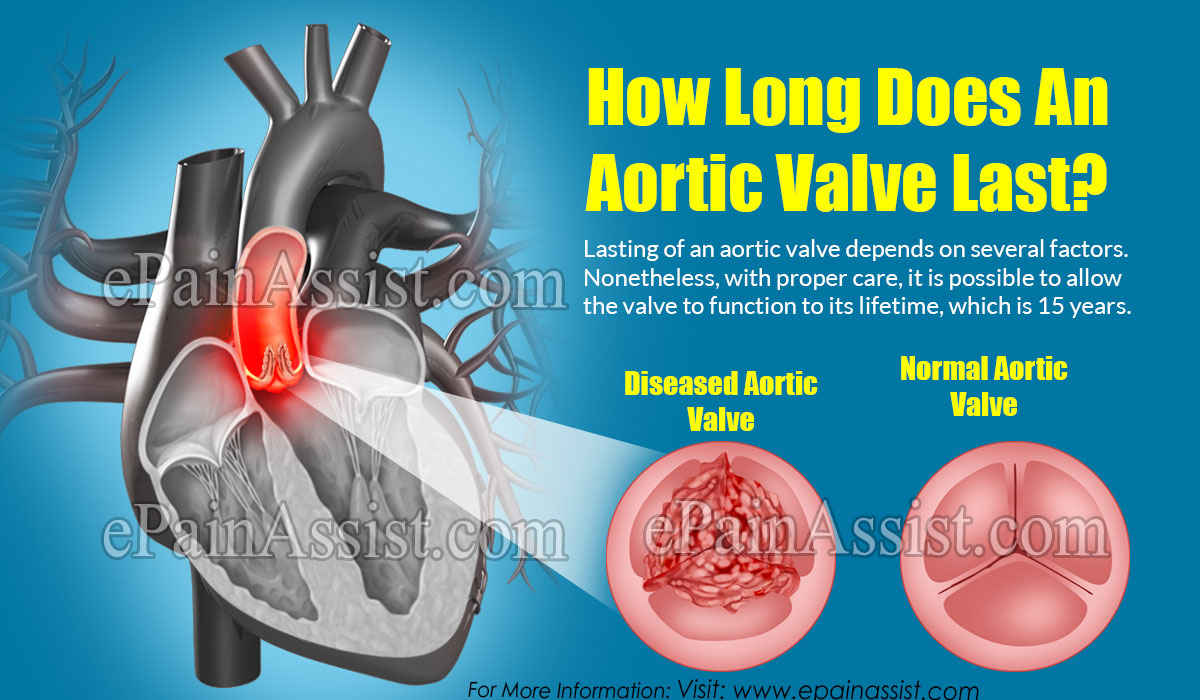Lasting of an aortic valve depends on several factors. Nonetheless, with proper care, it is possible to allow the valve to function to its lifetime, which is 15 years. We are speaking here about tissue aortic valve replacement. In case of a mechanical valve, it will last forever but arrives with a clause – the patient will be consuming blood thinning medication for the rest of the life.

Use of Tissue Valves
Using tissue valves is a critical aspect, as it functions similar to that of the conventional human aortic valve. A person requires the replacement of an aortic valve when the patient is suffering from diseases that dysfunction the valve. Not attending to the situation will result in a life-threatening condition because the valve sends back the blood pumped by the heart.
As the lifespan of the tissue valve is around 15 years, doctors do not recommend its use in younger patients. Additionally, they will consider the use depending on other factors such as the age of the patient, the gender, the race, the overall health situation, and any undergoing medical treatments. These factors help in choosing between the mechanical valve and the tissue valve.
About Tissue Valves
The use of tissue valves existed for more than five decades. Doctors extracted aortic valves from pigs and cows, chemically treated it, and modified the genes to ensure proper functioning of the valve after a replacement. The use of pig’s valve is in demand because of its close resemblance to the human heart. However, as the genes are different, doctors treat in the lab before performing the replacement operation on a human being.
Given the fact that the life of a pig is around 15 years, the tissue aortic valve lasts the same. However, with recent progressions in the medical field, researchers claim to have extended the lifespan by another five years. It was possible with the growth in the genetic engineering. Researchers are infusing human genes and extracting the genes of the pigs to make it suitable for the human system.
Importance of an Aortic Valve
An aortic valve resides at the top of the heart and is the primary supply source of blood to various sections of the body. The valve allows the blood pumped by the heart into the aorta, the longest blood vessel in the body. The aorta separates into ascending and descending aorta with several branches extending from the same. These branches are arteries, and the blood flow passes through them to different regions of the body.
Malfunction of the valve reduces the flow of the blood into the aorta and the arteries. Due to this, the organs do not receive the needed share of oxygen levels.
Additionally, the heart receives inflow from the top, as the valve prevents passage of the flow into the aorta. The excessive pressure built during this procedure leads to a crack in the valve. With the blood filling the heart and its surrounding regions, the situation becomes dangerous. Immediate surgery is the only way to come out alive from such a scenario. In most of the cases, patients die en route to the hospital.
Treatment
Replacement of the damaged aortic valve with a tissue valve or mechanical valve is the only solution. Before beginning the surgery, the doctor performs tests and understands the symptoms faced by the individual to choose the best available option. If the condition is the beginning stage, they place the patients under observation and study the progress. If the symptoms are becoming severe, then they opt for surgery and elect between the mechanical or tissue valve based on the age, gender, and overall health condition of patient.
- American Heart Association (AHA) – Heart Valve Problems and Disease: https://www.heart.org/en/health-topics/heart-valve-problems-and-disease
- Cleveland Clinic – Heart Valve Disease: https://my.clevelandclinic.org/health/diseases/17008-heart-valve-disease
- Mayo Clinic – Heart Valve Surgery: https://www.mayoclinic.org/tests-procedures/heart-valve-surgery/about/pac-20384741
- National Heart, Lung, and Blood Institute (NHLBI) – Heart Valve Disease: https://www.nhlbi.nih.gov/health-topics/heart-valve-disease
- Journal of Thoracic Disease – Advances in tissue-engineered heart valve replacement: https://www.ncbi.nlm.nih.gov/pmc/articles/PMC5248550/
Also Read:
